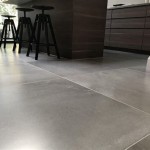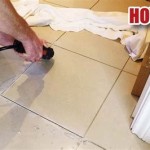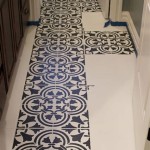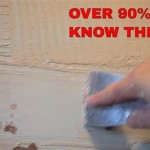Effectively Removing Silicone Sealant From Tiles
Silicone sealant is a ubiquitous material used in construction and home improvement for creating waterproof and airtight seals around bathtubs, showers, sinks, and tile installations. Its flexibility and durability make it an ideal choice for these applications. However, silicone sealant can degrade over time, becoming discolored, cracked, or even harboring mold and mildew. Furthermore, aesthetic preferences may change, requiring the removal and replacement of existing sealant. Removing silicone sealant from tiles can be a challenging task due to its adhesive properties and resistance to many solvents. This article provides a comprehensive guide on how to effectively remove silicone sealant from tiles without damaging the underlying surface.
Before commencing the removal process, it's crucial to gather the necessary tools and materials. Having the right equipment will significantly simplify the task and minimize the risk of damaging the tiles. The following items are commonly required:
- A sharp utility knife or specialist sealant removal tool
- A plastic scraper or putty knife (metal can scratch the tile)
- White spirit or a dedicated silicone sealant remover
- Soft cloths or paper towels
- Protective gloves and eye protection
- A vacuum cleaner or brush to remove debris
Ensuring adequate ventilation is also essential, especially when using solvents. Open windows or use a fan to circulate air and minimize the inhalation of fumes.
Preparation: Softening the Sealant
The initial step in removing silicone sealant is to soften it, making it easier to cut and scrape away. Several methods can be employed to achieve this. One approach involves applying heat. A hairdryer, set to a low or medium setting, can be used to gently warm the sealant. The heat will soften the silicone, making it more pliable and easier to separate from the tile surface. Avoid overheating the sealant, as this can cause it to melt and become even more difficult to remove. Direct prolonged heat application to a single spot should also be avoided as some tiles are sensitive to thermal shock and could crack.
Another method involves using a specialized silicone sealant softener or remover. These products are formulated to break down the chemical bonds of the silicone, weakening its adhesion to the tile. Apply the softener according to the manufacturer's instructions, allowing sufficient time for it to penetrate the sealant. These products are readily available in most hardware stores and home improvement centers. It is essential to read and follow the product's instructions carefully, paying attention to any safety precautions.
Regardless of the method used to soften the sealant, patience is key. Allow sufficient time for the heat or softener to work before attempting to remove the sealant. Rushing the process can result in incomplete removal and potential damage to the tiles.
Cutting and Scraping: Physical Removal of the Sealant
Once the silicone sealant has been softened, the next step is to physically remove it from the tile surface. This typically involves cutting and scraping. Using a sharp utility knife or a specialized sealant removal tool, carefully score along both edges of the sealant bead, where it meets the tile surface. The goal is to sever the bond between the sealant and the tile without scratching or damaging the tile itself. Apply consistent pressure and maintain a steady hand to achieve a clean cut. Multiple passes with the knife may be necessary, especially if the sealant is thick or stubborn.
After scoring the edges, attempt to lift a corner of the sealant with the knife or scraper. Once a corner is lifted, gently pull on the sealant, working along the length of the bead. In some cases, the sealant will come away in one continuous strip. However, it is more likely that the sealant will break into smaller pieces. Use the plastic scraper or putty knife to carefully scrape away any remaining sealant residue. Hold the scraper at a shallow angle to the tile surface to minimize the risk of scratching. Avoid using excessive force, as this can damage the tile or grout.
For stubborn areas, reapply heat or sealant softener and repeat the cutting and scraping process. It may be necessary to switch between the knife and scraper to effectively remove all of the sealant. Take your time and be patient, focusing on removing the sealant cleanly and without damaging the surrounding surfaces.
Cleaning and Finishing: Removing Residual Silicone
After the bulk of the silicone sealant has been removed, a thin film or residue may remain on the tile surface. This residue can be difficult to remove and can detract from the overall appearance of the installation. Several methods can be used to clean and finish the surface, removing any remaining silicone residue.
White spirit (mineral spirits) is an effective solvent for dissolving silicone residue. Apply a small amount of white spirit to a soft cloth and gently rub the affected area. The white spirit will dissolve the silicone, allowing it to be wiped away. Be sure to work in a well-ventilated area and wear gloves to protect your skin. Avoid using excessive amounts of white spirit, as it can damage some types of tile or grout.
Alternatively, a dedicated silicone sealant remover can be used to remove residual sealant. These products are specifically formulated to dissolve silicone and are often more effective than white spirit. Apply the remover according to the manufacturer's instructions, allowing sufficient time for it to penetrate the residue. Wipe away the dissolved silicone with a clean cloth or paper towel. It is critical to review the safety data sheet for any chemical product before use.
Once the silicone residue has been removed, clean the tile surface with a mild detergent and water to remove any remaining solvent or cleaner. Rinse thoroughly with clean water and dry with a soft cloth. Inspect the surface for any remaining imperfections and repeat the cleaning process as necessary. Clean the grout lines thoroughly. If mold or mildew was present under the old sealant, consider using a mold and mildew cleaner to disinfect the area before applying new sealant.
After the cleaning process, the tiles should be free of silicone sealant and residue, ready for the application of new sealant or other finishing touches. The successful completion of these steps ensures a clean and professional-looking result.
Proper disposal of the removed silicone sealant and any cleaning materials is important. Sealant remnants should be placed in a plastic bag and disposed of according to local regulations. Rags or cloths used with solvents should be allowed to air dry completely before disposal to prevent the risk of fire. Similarly, the container used to soak rags should be metal, and have a lid to prevent spontaneous combustion.
How To Remove Silicone Sealant From Tile Glass Metal And Wood

How To Remove Silicone From Tiles A Step By Guide

How To Remove Silicone From Tiles A Step By Guide

How To Easily Remove Silicone Caulk Without Using Chemicals
How To Remove Silicone Sealant From Tile Glass Metal And Wood

How To Remove Silicone Sealant From Tiles 100 Characters
How To Remove Silicone Sealant From Tile Glass Metal And Wood

How To Remove Silicone Sealant Daqiq Chimie Co
How To Remove Silicone Your Guide Wd 40

How To Remove Silicone Sealant Daqiq Chimie Co
Related Posts








